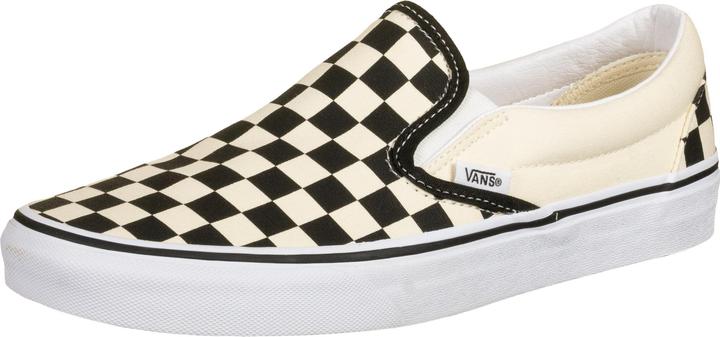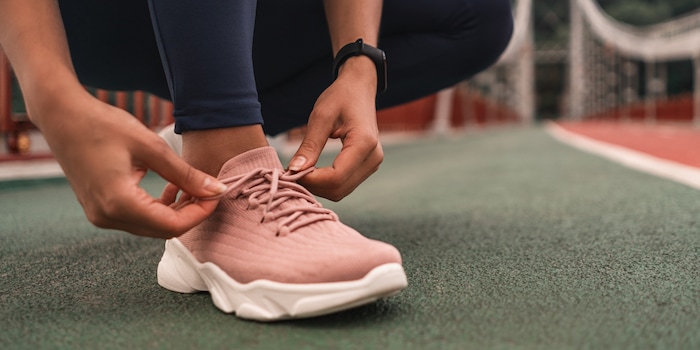

High-cost heels: shoe prices on the rise
Inflation’s slowly creeping into online retail. The entire product range of Galaxus and Digitec in Switzerland was 0.8 per cent more expensive on average in January 2023 compared to January 2022. Shoes are particularly affected by this development. On average, footwear will set customers back eight per cent more today than it did twelve months ago. For sneakers and rubber boots, prices have soared by a whole fifth.
For sneakerheads, it’s a bitter pill to swallow. Purchasing Vans size 43 «Classic Slip-Ons» in early February 2023 has meant shelling out 30 per cent more than it did one year ago. And this classic model is no exception. All sneakers featured in the Galaxus range cost 19.4 per cent more on average this January than they were the same time last year (see chart). The price evaluation included all models Galaxus has featured in its product range for at least 12 months.
Flip-flops and wellies have been affected the most in the range, with prices rising by 24.4 and 22.4 per cent respectively. Overall, shoes from Galaxus were 7.6 per cent more expensive than twelve months ago. What’s more, inflation has not spared shoelaces, sandals, slippers and winter footwear either. Only espadrilles have become cheaper on average. However, the demand for them is small in winter.

The evaluation included a sales price analysis of all product types represented with over 100 products available. These include soft toys, cat food and smartphones, to name but a few. The monthly median sales price of each product type was then compared to its sales price 12 months ago.
Scarce raw materials and exclusivity
But why have shoes been affected so badly by rising prices? Lina Friedrich, Category Business Manager at Galaxus, is responsible for the shoe range and states four main reasons: «Firstly, practically all brands have increased their prices because raw materials have become scarce and therefore more expensive.» This mainly concerns synthetic materials including plastic, nylon mesh, polyester and polyurethane foam. That’s why sports shoes, rubber boots and flip-flops are feeling the punch most. According to the German industry platform «Kunststoff Information», the price of plastics has increased by 58.6 per cent in 2021 and by another 9.3 per cent in 2022. But the prices of natural materials, such as rubber or cotton, have also gone up: «Manufacturers have struggled to get their hands on enough high-quality raw materials,» says Lina.
According to industry association «Footwear Distributors and Retailers of America», many companies have been unable to produce enough shoes in recent months to meet the demand. However, the current year is showing signs of a normalisation. For example, at present, plastics prices are just under 16 per cent below the previous year.
«Second, some brands have positioned themselves in a higher price bracket,» Lina explains. «These brands are hoping to generate more profit by attracting a smaller but more affluent target audience.» At least in Switzerland, this strategy seems to be working. In January 2023, Galaxus customers bought almost 29 per cent more shoes than in January 2022.
Brands going for sustainability
A third reason for increased footwear prices is that some manufacturers are working towards a more sustainable production. «Companies making the switch to organic cotton, recycled polyester or chrome-free tanned leather are faced with higher costs,» says Lina. Costs that are ultimately borne by consumers. This shift towards sustainability is so pronounced that tanneries certified with the eco label Leather Working Group, for example, are completely overbooked. «The demand for more sustainable materials is much greater than the supply,» Lina adds.
And then there’s the fourth and final reason Lina gives for the hefty price tags: «In January 2022, Swiss retailers were sitting on a large number of shoes. To make room in their warehouses, they needed to get rid of them via clearance sales.» In other words, given the current shortage we’re facing, shoe sales are less lavish this year.
The logic of the brands: costly equals quality
Here’s the good news for consumers. Meanwhile, not only the cost of plastics, but also the cost of transport by shipping container has dropped. According to Freightos, a booking and payment platform for international cargo, container prices are now back to pre-Covid levels.
Does this mean shoe prices will go down again? «I doubt it,» says Lina. «All other commodity prices have stayed high.» Combined with the fact that many manufacturers are moving production away from Asia to Europe for more sustainability, this has a greater impact on prices. «I also get the impression that brands want to keep prices high. The price could be viewed as an indicator for the value of their products. That’s why they deliberately make certain models more expensive, even if production costs have dropped.»
In addition, the purchasing prices for shoes at Galaxus have risen more sharply year-on-year than the sales prices. «Inflation is the result of a knock-on effect,» says Hendrik Blijdenstein, Chief Commercial Officer and man in charge of purchases and sales at Galaxus. «First, the raw materials companies put their prices up. Then, with some delay, manufacturers and their suppliers follow suit. And finally, the pressure on margins also forces retailers to tag along.» Because of the fierce competition and the fact that it’s so easy to compare prices, this happens later in online retail than in brick-and-mortar stores. «But the longer the inflation lasts, the more often we’ll probably have to put prices up, too.»
How do you deal with increased footwear prices? Do you still buy yourself new shoes when you see a pair you like? Do you tend to compare prices more often? Or are you more likely to resist that shopping urge? Join the discussion in the comments field.
At Digitec and Galaxus, I’m in charge of communication with journalists and bloggers. Good stories are my passion – I am always up to date.
News about features in our shop, information from marketing and logistics, and much more.
Show all



